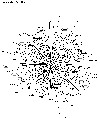Citation Information
Herbeck JT, Nickle DC, Learn GH, Gottlieb GS, Curlin ME, Heath L, Mullins JI (2006). Human immunodeficiency virus type 1 env evolves toward ancestral states upon transmission to a new host. Journal of virology, 80(4), 1637-44. (pubmed)
Abstract
Selecting human immunodeficiency virus (HIV) sequences for inclusion within vaccines has been a difficult problem, as circulating HIV strains evolve relentlessly and become increasingly divergent over time. We report an assessment of this divergence from three perspectives: (i) across different hosts as a function of time of infection, (ii) between donors and recipients in known transmission pairs, and (iii) within individual hosts over time in relation to the initially replicating virus and to the deduced ancestral sequence of the intrahost viral population. Surprisingly, we consistently found less divergence between viruses from different individuals sampled in primary infection than in individuals sampled at more advanced stages of illness. Furthermore, longitudinal analysis of intrahost divergence revealed a 2- to 3-year period of evolution toward a common ancestral sequence at the start of infection, indicating that HIV recovers certain ancestral features when infecting a new host. These results have important implications for the study of HIV population genetics and rational vaccine design, including favoring the inclusion of viral gene sequences taken early in infection.
Supplemental Data
Supplemental data for Herbeck et al., J. Virol. 80: 1637-1644
Appendix Figure 1. An unrooted neighbor-joining HKY85 phylogram with all MACS 1993 late infection and PIC 1993 early infection sequences shown in relation to each other and 100 CDC sequences. MACS 1993 are circled in gray ovals, PIC 1993 are boxed in black rectangles. Mean tip branch lengths are significantly longer in MACS 1993 than PIC 1993 lineages (P 0.001, two-tailed Mann-Whitney U test). . jl, 26jan06

